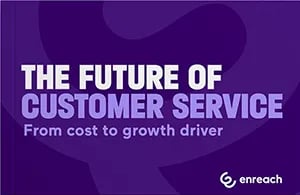We’ve been obsessed with how fast agents can finish their after-call work, but that shouldn’t be the point anymore.
Real-time transcription “writes down” everything during the call, so agents don’t have to do it afterwards. That means they can focus on the conversation — and help customers better in the moment.
Key takeaways
- Real-time call transcription cuts down after-call tasks: Notes and updates happen automatically, so agents can move on quickly.
- Focus on value, not speed: It’s less about wrapping up fast and more about making the most of each call.
- Better records, better decisions: Calls are documented as they happen, making it easier to act on what’s important.
Instead of asking, “How fast can we wrap up?” the question becomes, “How effectively can we use the insights generated?”
For decades, call wrap-up time has been a cornerstone metric in customer service. It measured how quickly agents could finish after-call work like documenting notes, updating CRM systems, or scheduling follow-ups.
But in the era of real-time transcription and AI-powered customer service, this obsession with reducing call wrap-up time is losing its relevance.

The shift from documentation to real-time intelligence
Traditionally, wrap-up time focused on documenting what happened during the call. But with real-time transcription, value creation now happens during the conversation.
Key advantages of real-time transcription:
- Automated notes: Real-time transcription captures every word spoken during the call, automatically generating accurate and comprehensive notes. This eliminates the need for agents to manually document conversations after the call, saving time and ensuring nothing is missed.
- Instant summaries: At the end of the call, the transcription system can produce concise call summaries that are ready for immediate review. This streamlines CRM updates and follow-ups, reducing the need for manual effort during wrap-up.
- Seamless task integration: Real-time transcription can integrate directly with other tools, such as CRMs or knowledge bases, to automatically populate data fields, flag follow-up actions, or classify calls. All the agent needs to do is review, confirm, and get ready for the next customer.
This shift transforms traditional after-call work into automated processes, freeing agents to focus on delivering in-call value.
The goal isn’t to minimise wrap-up time anymore—it’s to maximise the value that each call generates.
Quality over speed
Historically, an emphasis on short call wrap-up times often led to:
- Rushed, incomplete notes that required follow-up corrections.
- Stress for agents trying to meet unrealistic KPIs.
Managers rely on accurate records to make decisions, but agents can’t document everything.
A new Salesforce Customer Service Report shows contact centre agents spend only 39% of their time servicing customers. The remaining 61% is spent on administrative duties, including manually logging case notes.
This misallocation of time doesn’t just impact operational costs—it directly affects an organisation's ability to spot trends, identify opportunities, and adapt to changing customer needs in real time.
Real-time transcription flips this paradigm:
- Agents no longer need to sacrifice detail for speed.
- Every call is comprehensively documented as it happens.
- The focus shifts to leveraging this rich, accurate information for smarter decision-making.
A note on post-call transcripts
While real-time transcription offers clear advantages for reducing call wrap-up time, post-call transcripts still play a valuable role.
Both options have their place, and the choice depends on the needs of your team. Real-time transcription can populate CRM fields, or flag follow-ups before the call even ends, while post-call transcripts provide robust data for post-conversation analysis.
From reducing wrap-up time to value creation
Call wrap-up time isn’t useless—but it’s no longer the north star of customer service metrics.
Forward-thinking organisations are already shifting their focus from post-call metrics to measuring value created during conversations: problems prevented, opportunities identified, and insights gathered.
The question isn’t how quickly we can wrap up anymore—it’s how much value we can create during calls and after.
Curious how this works in practice? Explore the full list of features behind our real-time call transcription.
Each month, we share articles our team finds worth reading to help you stay informed as Voice AI transforms customer experiences.


